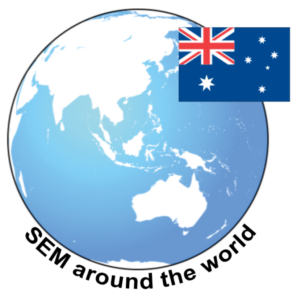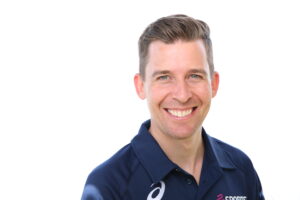We invited the Fellow Sports & Exercise Chiropractor Luke Nelson to share his perspective on Sport & Exercise Medicine (SEM) in his home country, Australia.

Tell us more about yourself
After graduating from my chiropractic studies at Royal Melbourne Institute of Technology University in 2003, I developed a strong passion for sports medicine. This saw me pursue further studies in this field, completing my Post Graduate Diploma in Sports Chiropractic and then a Masters in Sports Science. In 2019 I was awarded Fellowship in Sports & Exercise Chiropractic by the Australian Institute of Chiropractic Education (AICE).

Sports chiropractic is a branch of chiropractic for those with an interest and expertise in treating athletes. The focus of sports chiropractic is to provide care in the conservative management, rehabilitation and performance optimisation of the neuromusculoskeletal system for athletes.
I currently serve on several boards, including President of Sports Chiro Australia (SCA), Vice-chair of the Sports Medicine Australia (SMA) Victorian Committee, and a member of the Education Committee for the Federation of International Sports Chiropractic (FICS).
Most of my patient population are involved in sport at some level (recreational to professional), with runners making up a large proportion of this. I am a keen runner myself, and at the time of writing this, preparing for my 6th marathon. I have also lectured extensively, nationally and internationally, primarily on the management of runners.
What is the path to becoming a sport and exercise chiropractor in Australia, and what are the main hurdles on this path?
Sports Chiropractic Australia as a group was established over 30 years ago. In the last three years, a titling pathway was established with the formation of the Australian Institute of Chiropractic Education (AICE). Currently, we have a Member, Titled Member, and Fellow pathways. There are a variety of requirements needed to become a Titled member and Fellow, which include: at least five years of clinical experience (10+ years for Fellowship), further education (Master’s level degree to attain Fellowship), over 150 hours of sporting experience, publishing research and hours spent observing a sports medicine practitioner (outside of chiropractic).
The formation of this pathway over the last three years has not been without challenges in the profession. Still, there has been overwhelming acceptance of the value of recognizing those chiropractors with advanced learning in this field. This titling process has also been increasingly important as we continue to increase our involvement with sporting bodies in this country.
How developed is collaborative work in SEM in Australia?
Historically, sports chiropractic in Australia has not been included in the multidisciplinary SEM team; this was a fault of both the profession itself and the other SEM professions. Thankfully, this has improved in my time in SCA over the last ten years. We regularly feature practitioners from other sports medicine disciplines in our continuing education offerings (webinars and face-to-face events). We also have some members serve in board positions within Sports Medicine Australia: the national body for sports and exercise medicine.
Whilst sports chiropractic in Australia does not experience the same multidisciplinary involvement in elite sports that exists in other countries (i.e., the United States), this is gradually improving with time, with more doors being opened to our profession from an increasing number of national sporting organizations.
Are exercise physiologists/scientists integrated into your healthcare system, and does health insurance cover their services?
Exercise Physiology/science is a rapidly growing field in Australia, with over 8000 members in the national member organization: Exercise & Sports Science Australia (ESSA). Our chiropractic members regularly collaborate with exercise physiologists/scientists, with some working alongside them in multidisciplinary clinics. Private health insurance does cover exercise physiology services, and Medicare, the Federal Government, funded healthcare system, gives a rebate for up to 5 sessions per year when referred by a general practitioner or Sports and Exercise Physician.
What is done in Australia to promote SEM among students and young professionals regarding research and clinical opportunities?
Having been involved in SCA & SMA for several years, there is undoubtedly an emphasis in both these organisations to promote SEM to students. Within SCA, we will include students when we work at sporting events to observe or assist with treatment. Student membership is free within SCA, and we will aim to run at least two talks per year to the chiropractic student bodies at their respective universities. The last two years of COVID disruptions in our country have made this task quite challenging, but we are slowly getting back on track!
If you were Harry Potter, what would you change to SEM in Australia?
With a wave of my wand, I would love to see Sports & Exercise chiropractors enjoy the same level of collaboration and opportunity in the Sports Exercise Medicine team seen by my colleagues in North America. Unfortunately, magic does not exist, so this recognition and respect will only be achieved through the continued good work of those within (and outside) of our profession.